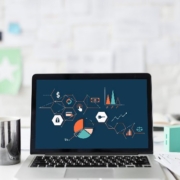Have you ever made a purchase online following someone’s advice? What about the recommendations that were prompted to you by the website itself? Being quite a common element of an eCommerce app, tailored product recommendations have proven to be an extremely effective tool for revenue growth.
Namely, Amazon’s recommendation engine is said to generate 35% of the platform’s total revenue. Taking into account its actual sales volume ($178 billion in 2017), this makes an additional $62 billion per year. Quite impressive, right?











